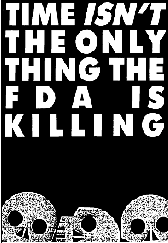#hivaids and policy
Have you ever had a medical professional describe your care as a collaboration between you and your doctors? Has a family member with a terminal illness been given expedited access to experimental treatments? Then your experience of medical care in America has been profoundly shaped by the AIDS crisis, and by ACT UP.
ACT UP was not the first or the only group involved in reforming the way medical research and medical care were done. Feminist health movements in the 1970s were an important forerunner, and feminist activism continued to be critical: in 1987, the Congressional Women’s Caucus got the National Institutes for Health (NIH) to change rules that kept women of child-bearing age out of all federally-funded medical research. The disability rights movement has been part of changing the conversation as well.
But AIDS activists, and particularly ACT UP, radically changed the face of medicine as we know it. By engaging with researchers, pharmaceutical companies, regulators, and doctors at all stages of the drug and treatment pipeline, by educating themselves on and challenging the orthodoxies of medical science, and by using the sheer numbers and anger of their members to their advantage, they created radically new relationships between patients and the medical establishment.

The FDA approved rules that allowed terminally ill patients expanded access to a drug undergoing phase II or III trials (or in extraordinary cases even earlier) if it potentially represented a safer or better alternative to other treatments. They also created a “parallel track” system to get potentially lifesaving drugs to patients who could not take part in clinical trials. The FDA’s official consulting with patient representatives as part of approving new treatments began with AIDS, but quickly expanded to include a range of cancers as well.
Gay urban men with AIDS, already connected through their pre-existing community, taught themselves and each other about the disease, and challenged their doctors about their care. The extent to which patients sometimes knew more about the disease than their doctors meant that the traditional balance of power in the medical relationship shifted.
By 1988, there was an entire infrastructure encompassing treatment publications and buyers clubs, advocacy groups and grassroots activists — a firm foundation that could then support widespread dissemination of medical knowledge. And by this point, these organizations’ knowledge about AIDS often exceeded that of the average practicing physician. “When we first started out there were maybe three physicians in the metropolitan New York area who would even give us a simple nod of the head,” said the director of a New York City buyers club in 1988. “Now, every day, the phone rings ten times, and there’s a physician on the other end wanting advice. [From] me! I’m trained as an opera singer!” (source)
It’s become a truism now that patients should learn about their conditions and their care, but it was largely people with AIDS who, in their numbers and their vehemence, shook up the medical establishment’s perspective on the doctor/patient relationship, and the ingrained belief that doctor knows best.
